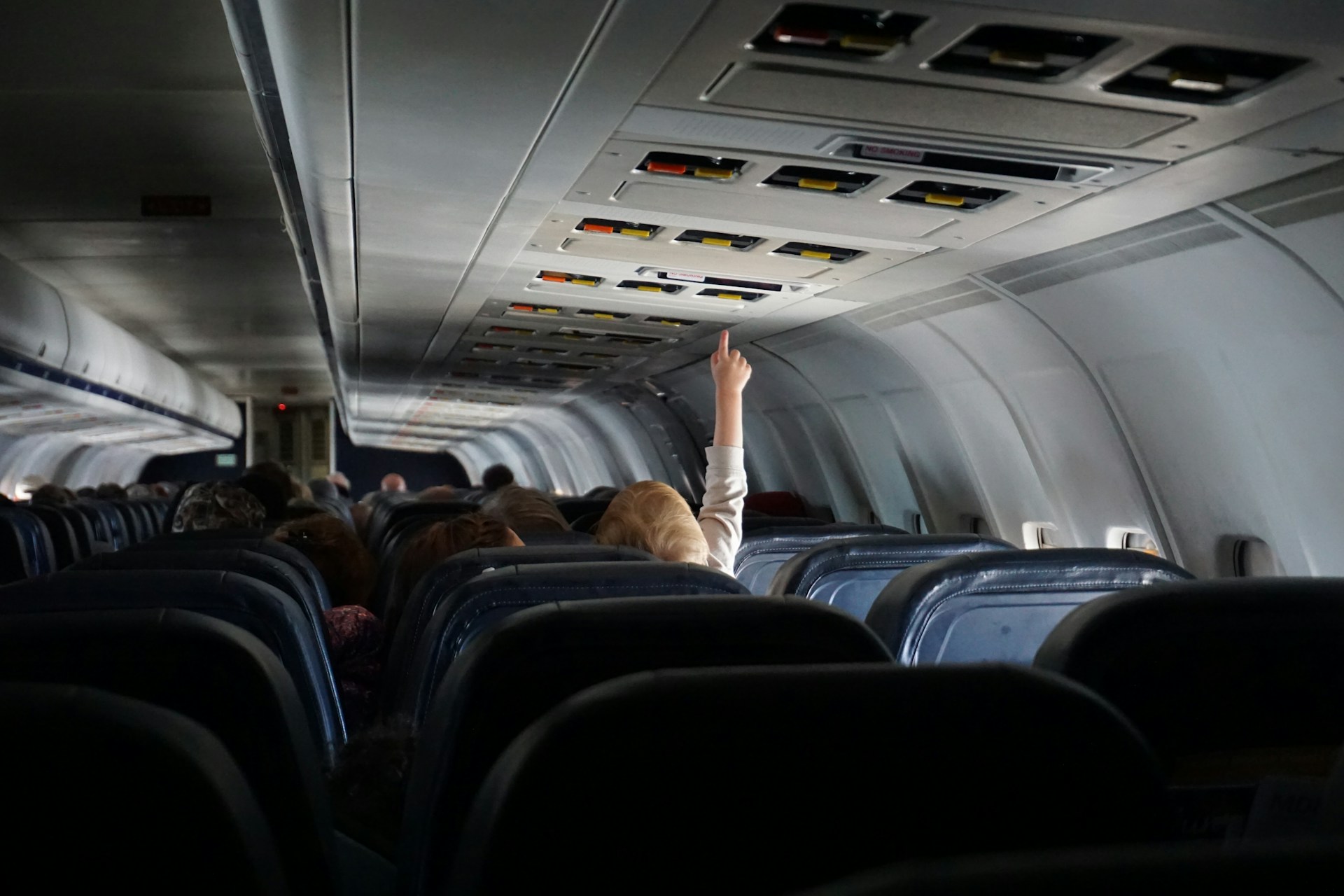
Modern air travel is incredibly safe, but complacency is a risk. Stay alert and aware with these essential airplane safety tips and insights.
When you’re zigzagging between three cities in four days, the airline safety briefing can feel like deja vu. Repetition of airplane safety advice breeds complacency — and complacency chips away at the record that makes modern air travel so reliable. Keep those odds firmly in your favor with a few extra seconds of attention and a clearer picture of the hardware, people and planning behind every flight you take.
Stay Alert — Even in Row 27
A sudden jolt is all it takes to turn a quiet cabin into chaos. On May 21, 2024, Singapore Airlines flight SQ321 hit extreme clear-air turbulence over Myanmar — one passenger died and 30 were injured, many of them unbelted.
Turbulence is the leading cause of passenger injuries on U.S. airlines, accounting for 36% of Part 121 accidents from 2008 to 2022. The quick fix is for people to wear their safety belts low and snug all the time.
An MIT study shows the risk of a fatality in commercial aviation has fallen to one in 13.7 million passenger boardings between 2018 and 2022, nearly twice as safe as the previous decade. Engineering advances get the headlines, but those numbers stay low only when frequent flyers refuse to scroll past the basics.
Make these habits automatic:
- Map your exits: Count seatbacks forward and aft. If smoke fills the aisle, you can reach a door by feel.
- Stow for survival: Heavy laptops belong in bins. Battery packs ride under the seat, where overheating is easier to spot and handle.
- Hydrate and circulate: A bottle of water and frequent calf flexes beat any jet-lag pill for reducing the risk of deep vein thrombosis.
- Sit ready: Keeping feet flat, the footwell clear and the shoulder harness snug in lie-flat seats will enable you to brace if needed.
- Read the safety card for every flight: Study up on vest stowage, raft pouches and brace diagrams, which can be different for each airline.
None of these steps takes more than a minute, yet each buys protection against the only variable you can’t schedule around — the unexpected.
Hardware Between You and Harm
Before the cabin door closes, an array of built-in defenses is already working for you. From crash energy-absorbing seats to medical kits that rival an ambulance, each component is certified and ready long before you fasten your belt.
- Crash-worthy seats: Your seat is more than upholstery. The Federal Aviation Authority (FAA) rule 14 CFR 25.562 demands it survive 16Gs of force frontal and downward without ripping free — about the jolt of a 45 mph car crash.
- Fire-smart interiors and rapid evacuation: Wall panels, carpeting and bins must limit flame spread, and manufacturers must prove a full cabin can empty in 90 seconds with half the exits blocked, per 14 CFR 25.803. Photoluminescent floor strips light the way if power is lost.
- Oxygen on demand for the short and long term: Drop-down masks supply about 10 minutes of flow during an emergency descent. For medical events, crews wield portable cylinders holding about 11 cubic feet of oxygen with valves set at 2 or 4 liters per minute, giving rescuers up to an hour for one patient.
- Life vests and slide-rafts: Every overwater flight has a vest for each occupant and a raft space for everyone on board. Even many coastal domestic flights comply with the same rule.
- Medical kits: Departure is illegal without a sealed emergency medical kit and an AED. Flight attendants train to use everything inside — from epinephrine auto-injectors to advanced airways — under real-time physician guidance.
- Firefighting gear: Halon extinguishers, protective-breathing hoods and battery-containment bags give crews multiple layers against flames while keeping them conscious long enough to fight the fire.
Preflight Moves That Matter
Airplane safety starts long before you buckle in. Several decisions made at the booking screen or on the ride to the airport cement your risk buffer. A bit of preflight homework turns you into an informed participant in the safety system.
- Choose the right seat: Statistically, aisle seats just aft of the wing root experience the lowest accelerations in a survivable crash. Window seats keep you from being hit by flying carts in turbulence but add seconds to an evacuation. Pick based on the threat you’re most concerned with, not just legroom.
- Check the aircraft type: New-generation plane models certified under the latest FAA and European Union Aviation Safety standards — A220, 787 or A350 — come with upgraded fire-blocking seats, higher crash-load requirements and advanced smoke detectors. Switching flights can secure hardware advantages at no cost if schedules are flexible.
- Use turbulence-forecasting tools: Apps like the FAA’s Turbulence Viewer or the NOAA-powered GTG forecast show probability zones hours ahead. These won’t eliminate bumps, but they help you time meals and bathroom visits so you’re belted when rough air peaks.
- Review exit row etiquette: Accepting that extra legroom means committing to lifting a 50-pound hatch and stepping onto a wing in smoke and darkness. Swap seats before the door closes if you’re distracted, sleepy or traveling with dependents.
- Carry your own essentials: A whistle, a small headlamp and prescription meds in a belt pouch survive better than anything in an overhead compartment. Business dress shoes come off fast — elastic-lace travel sneakers won’t slow a slide evacuation.
Expert Hands Guiding Your Flight
Behind every checklist and circuit breaker stand professionals whose careers orbit airplane safety. Line pilots spend two to four days in full-motion simulators every six months, repeating engine failures, runway overruns and decompressions until examiners sign them off.
Flight attendants — hired mainly for safety duties — undergo weeks of initial ground school covering firefighting, slide-raft deployment, CPR/AED and security drills. They also go through early refresher programs.
Licensed technicians stretch the safety net even further. From daily oxygen-bottle pressure checks to time-limited overhauls of escape slides, their signatures in the maintenance log are legally binding.
Finally, data analysts sift gigabytes of flight-recorder information after every journey. Hard landings, unstable approaches and scratchy cockpit warnings feed into predictive models that spawn near-simulator scenarios for the next pilot class.
Make Yourself a Strong Link in the Airplane Safety Chain
Crash-tested seats, oxygen for every scenario, flame-resistant interiors and crews who train like first responders form an enormous airplane safety cushion. However, the final buffer is personal and depends on your participation. Buckling up, studying the exits and doing your preflight homework turns you into an active partner in the chain of protection. That simple diligence keeps the MIT safety graph sloping downward and ensures that you walk into your next meeting instead of becoming the subject of one.
Was this news helpful?







 Yes, great stuff!
Yes, great stuff! I’m not sure
I’m not sure No, doesn’t relate
No, doesn’t relate



